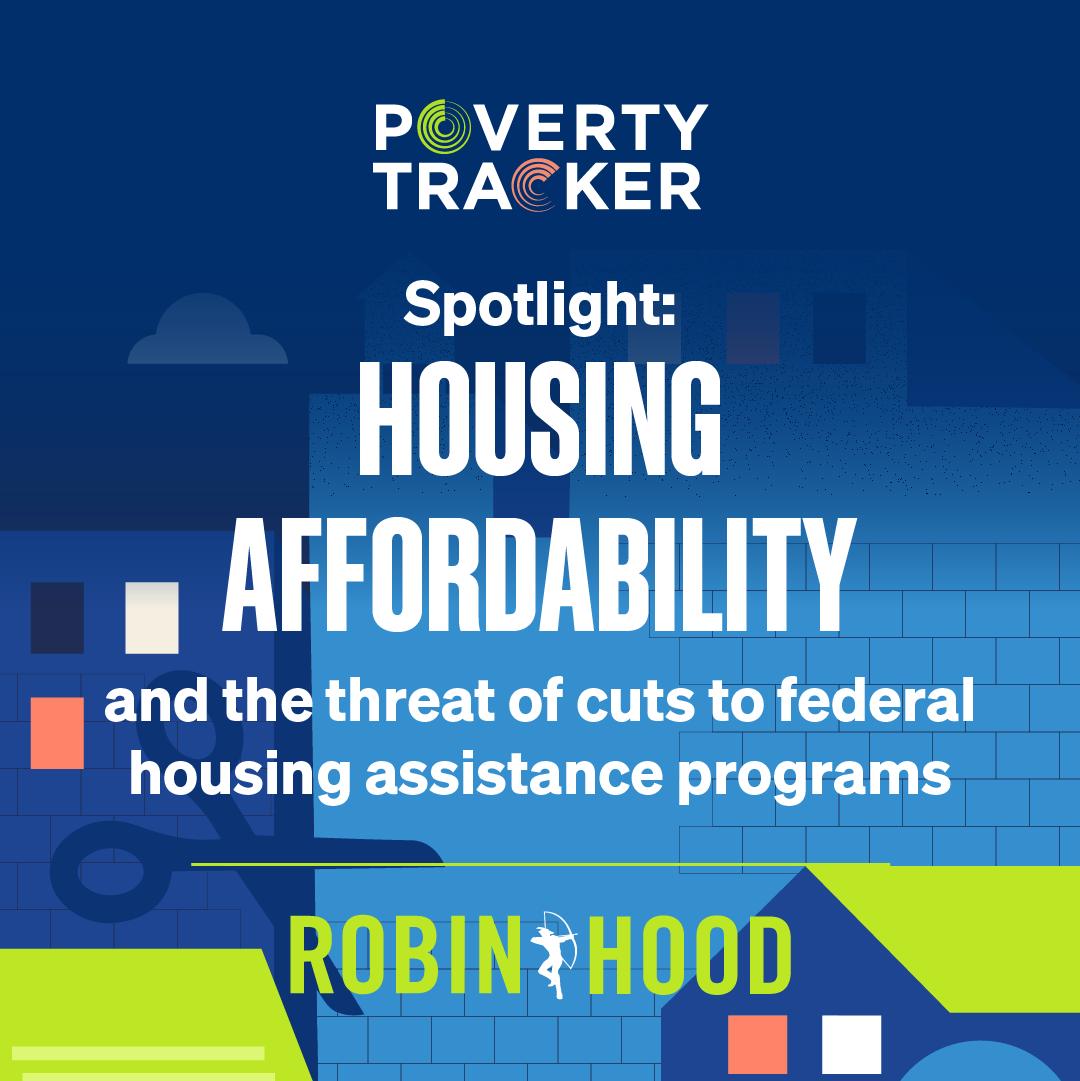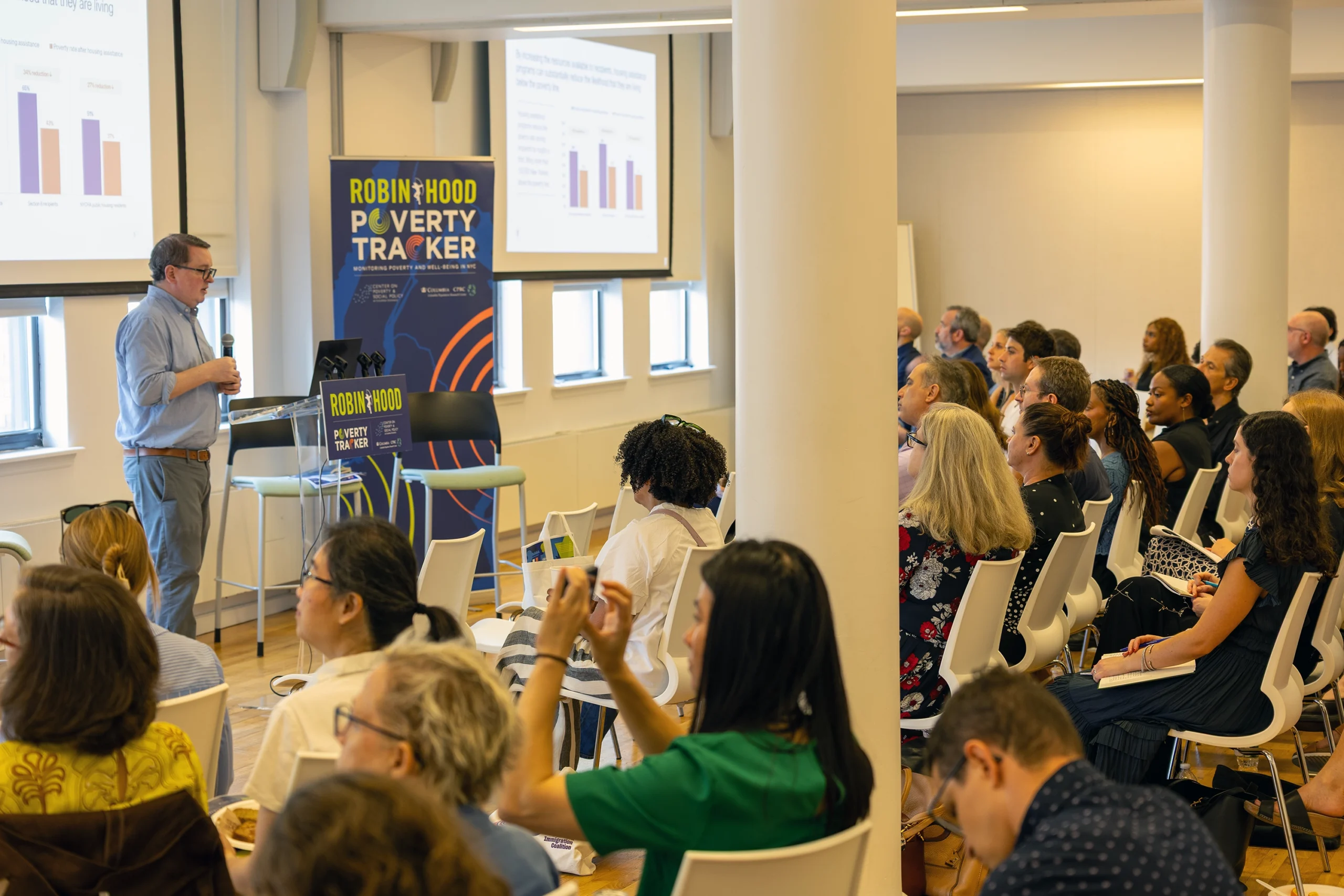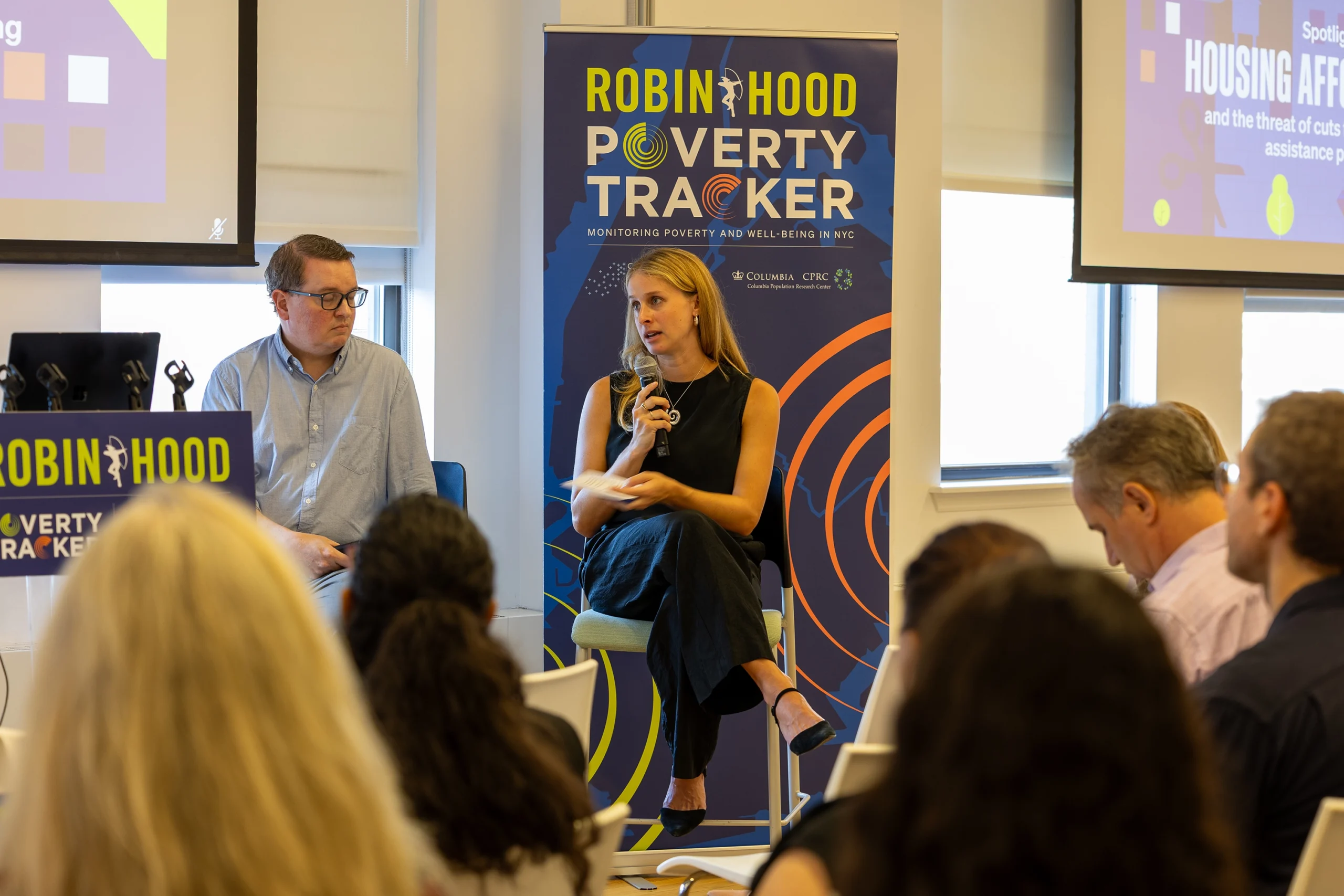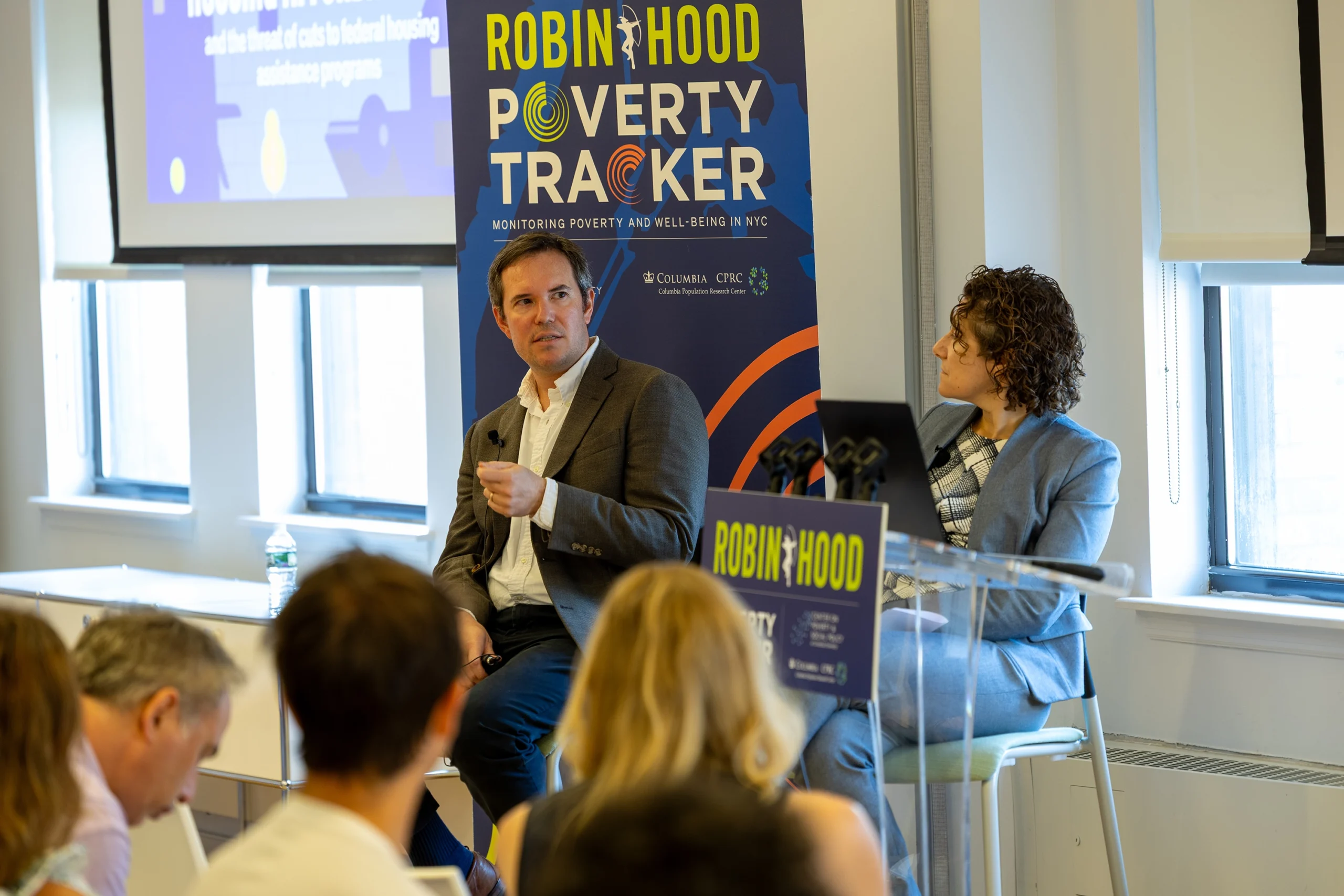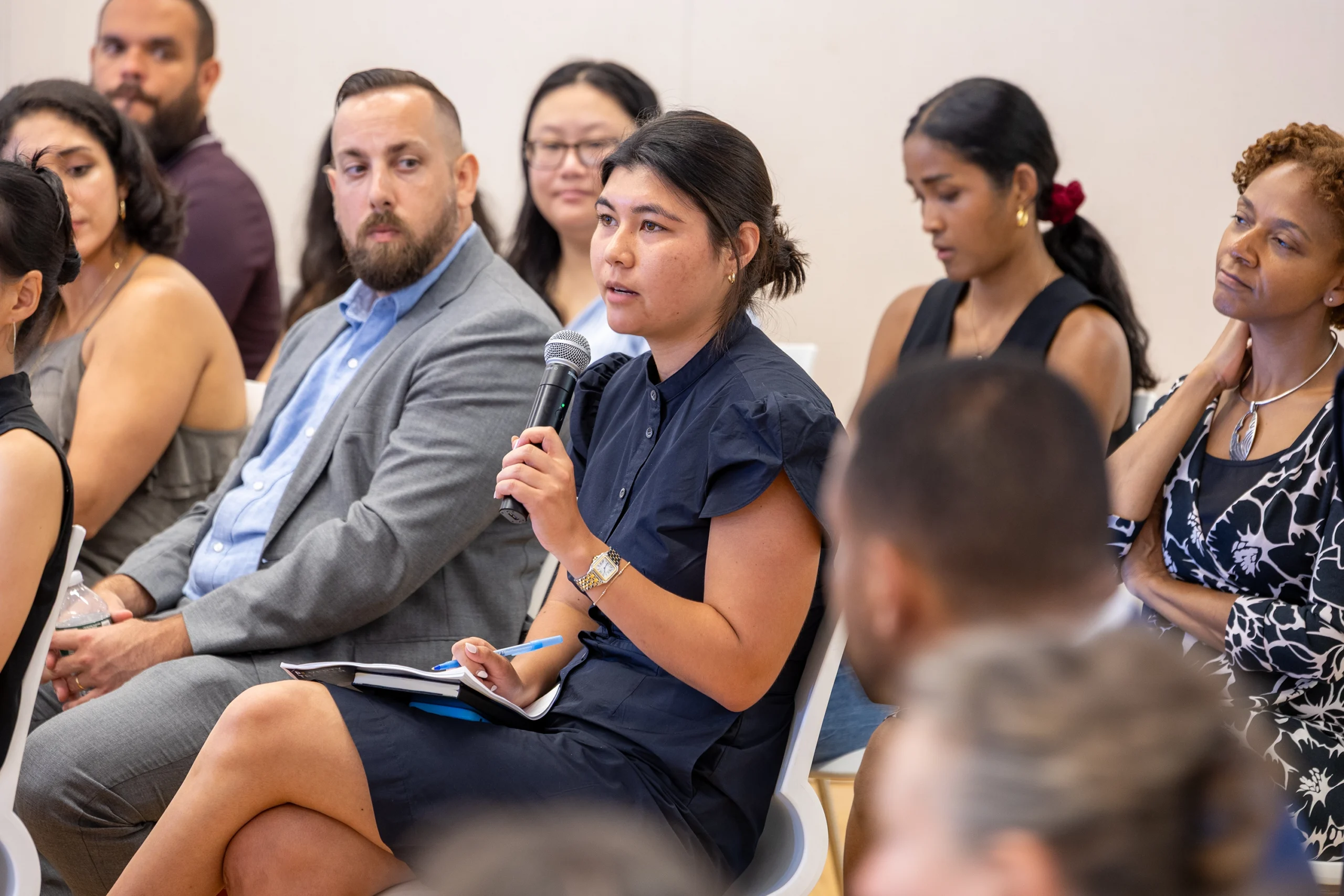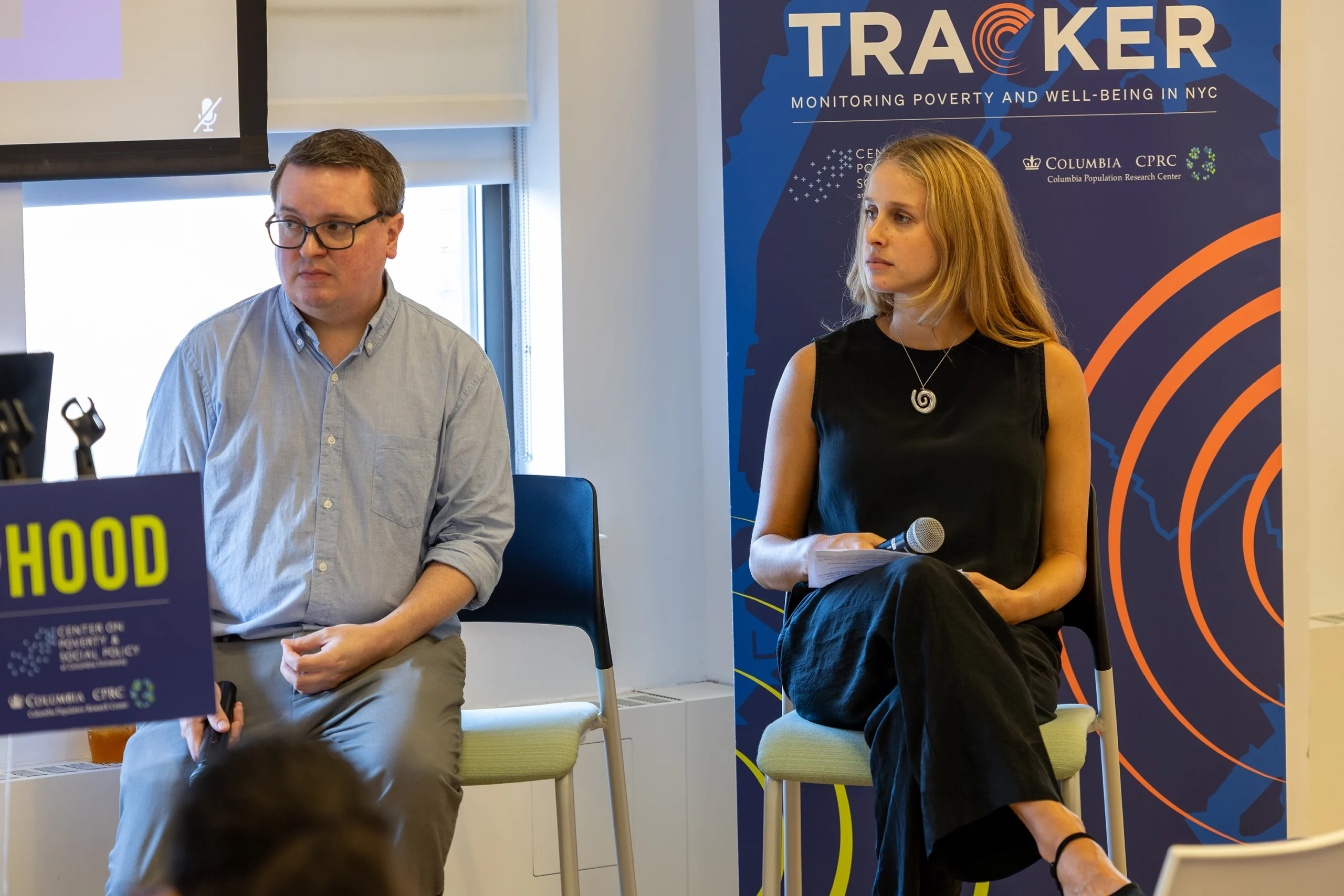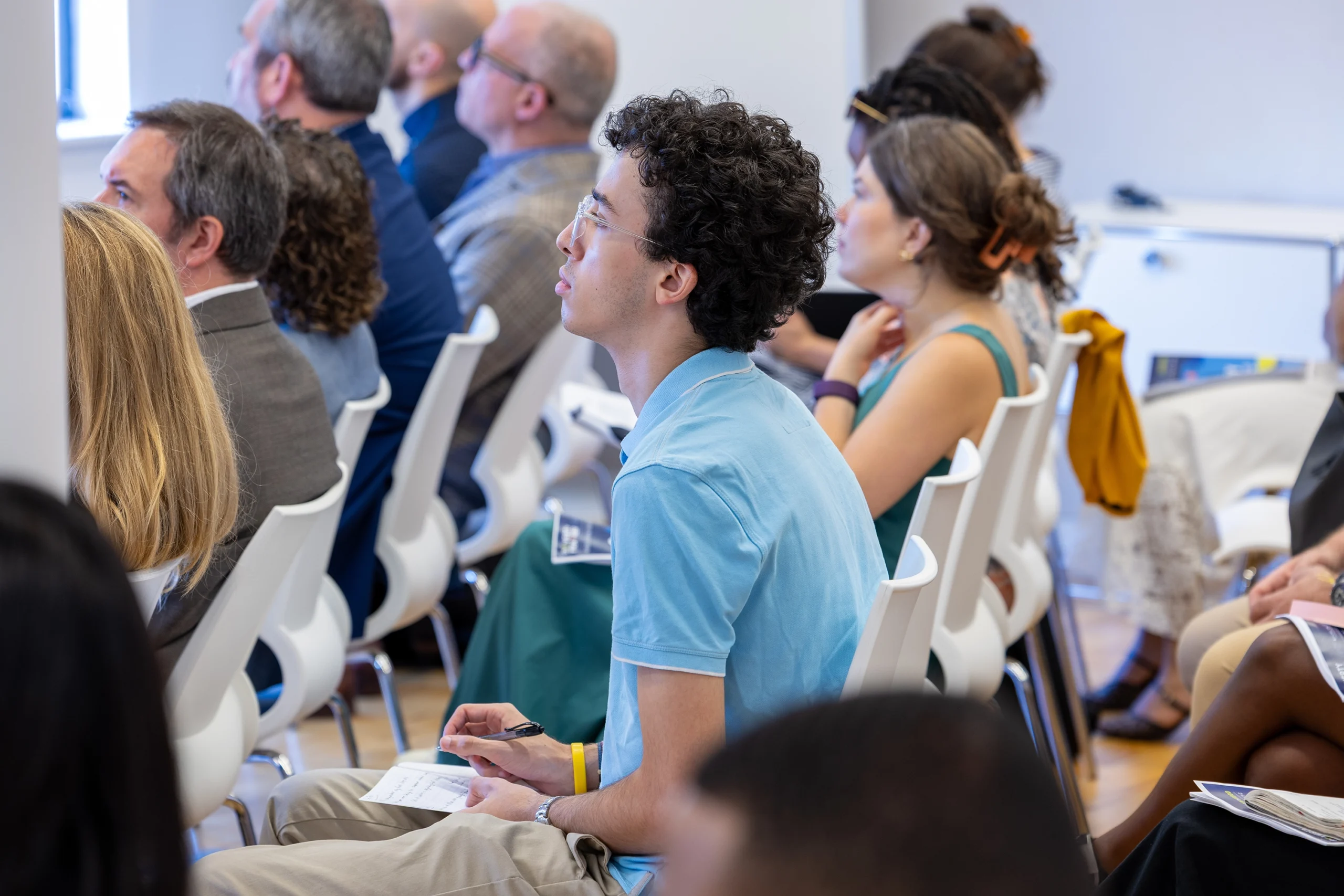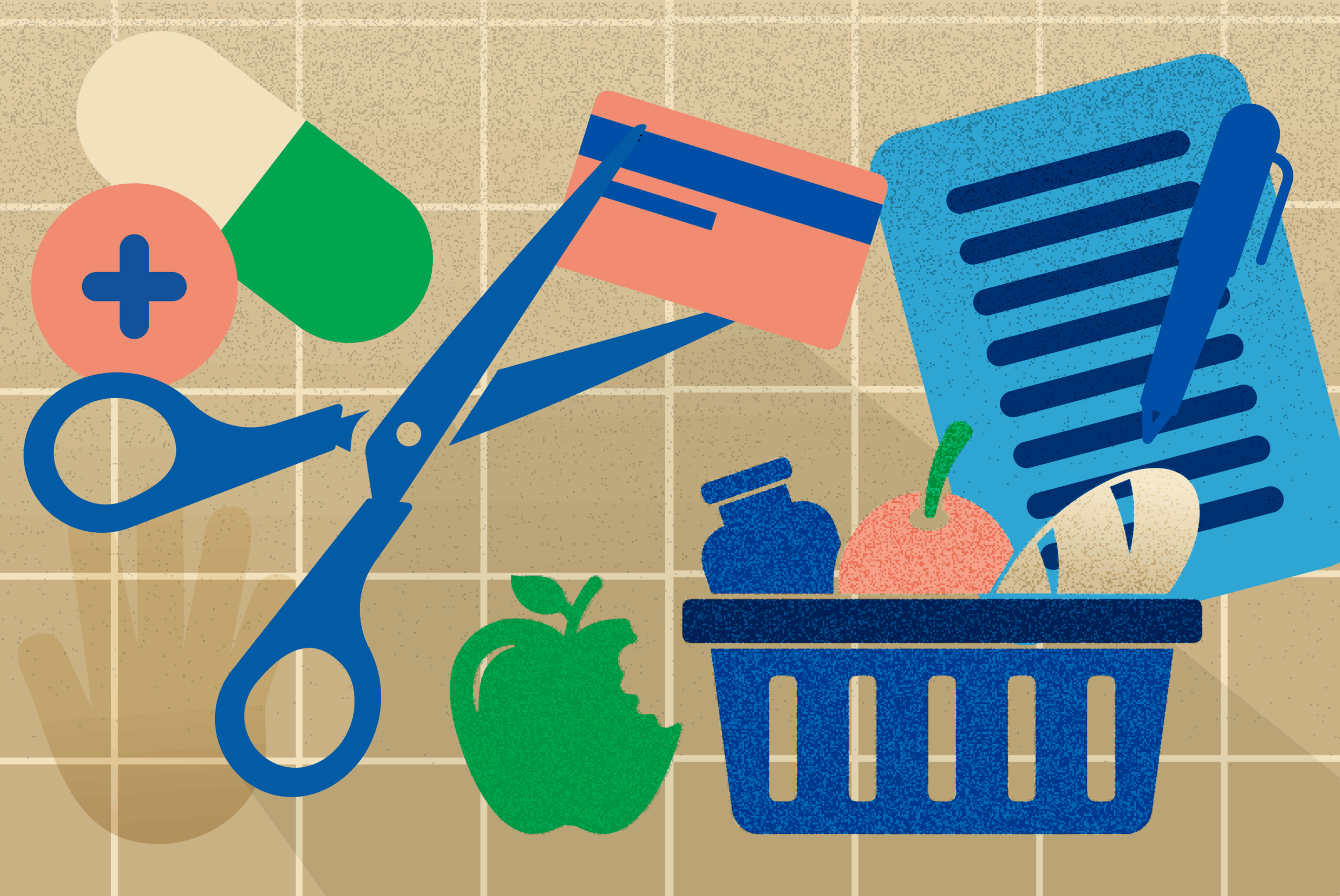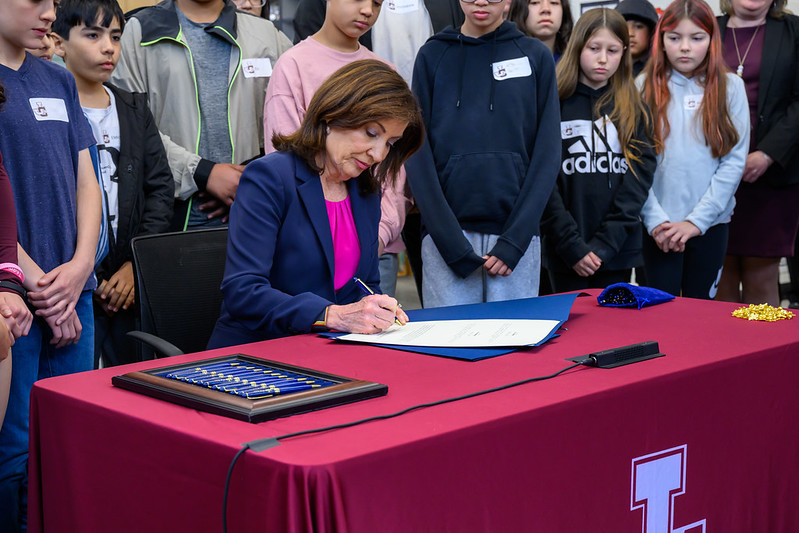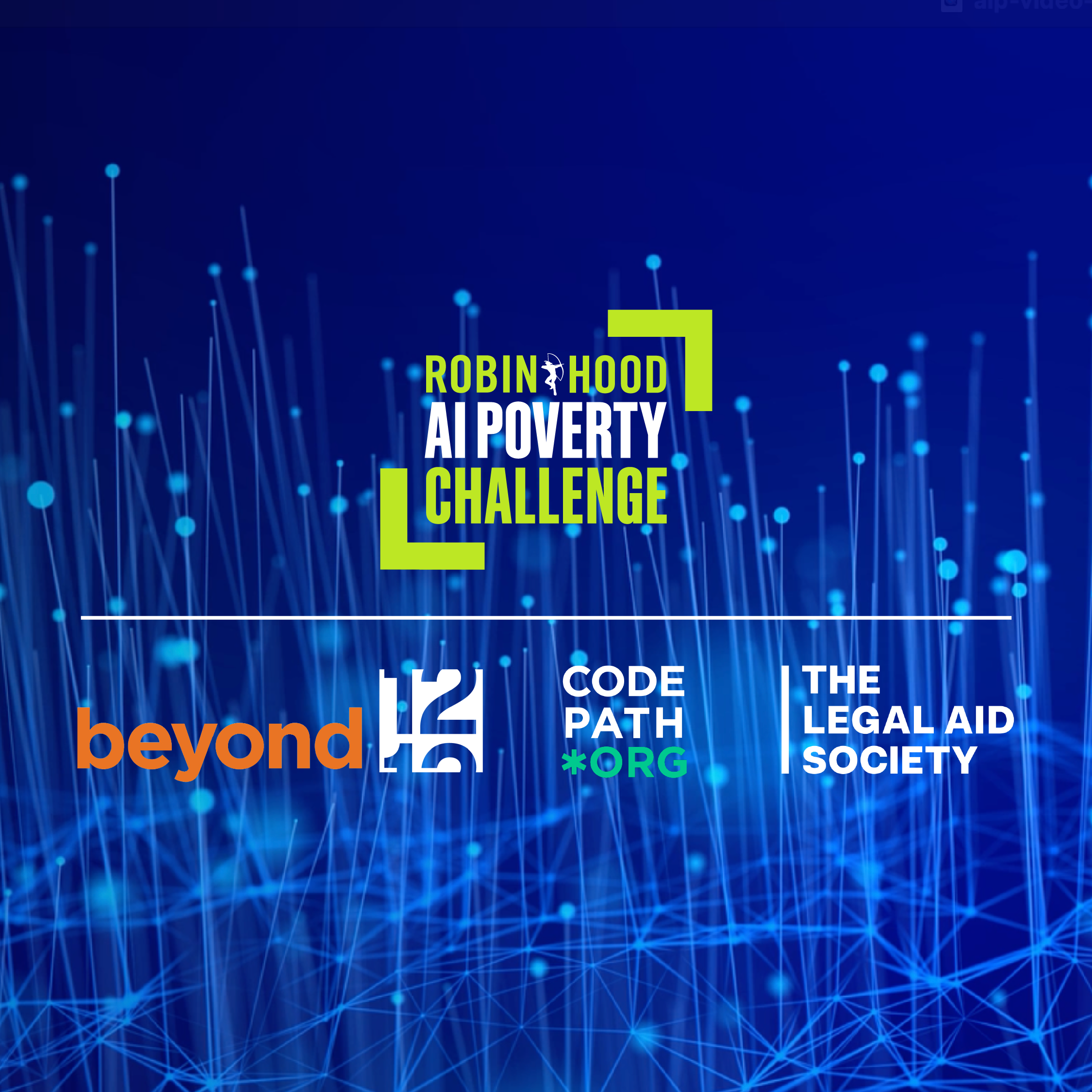Jul 16, 2025 Press Release
New Poverty Tracker Report Finds Housing Assistance Programs Reduce Poverty Rate Among Recipients by a Third, Lifting More Than 150,000 New Yorkers Above the Poverty Line
If faced with a loss of housing assistance, limited affordable housing options would leave the most vulnerable New Yorkers with nowhere to go, while threatening to push the city’s poverty rate higher
NEW YORK – Robin Hood, in collaboration with the Columbia University Center on Poverty and Social Policy, today released a new Poverty Tracker Spotlight Report: Housing affordability and the threat of cuts to federal housing assistance programs.
The report’s data and research demonstrate the profound poverty-alleviating effect that federal and local housing assistance programs have on low-income New York City renters.
Findings show that public housing and rental assistance programs, including federal Section 8 and New York City’s CityFHEPS program, collectively cut poverty among program beneficiaries from 55% to 37%—or roughly a third. As a result, these programs keep 150,000 New Yorkers above the poverty line and spare an additional 140,000 from deep poverty, defined as living below 50% of the poverty line.
The spotlight on housing assistance follows Robin Hood’s annual Poverty Tracker report, released in February, which found an increase in the citywide poverty rate to a historic 25%, up from 23% just a year earlier. This increase in poverty was driven by the rising cost of basic necessities, particularly the persistently high cost of rent. While all New Yorkers face the city’s affordability crisis, those living in poverty unsurprisingly bear the heaviest burden. Across the city, 40% of renters are rent-burdened, defined as spending more than 30% of their income on rent. However, New Yorkers in poverty make up the vast majority of renters who are severely rent-burdened, defined as spending more than half of their incomes towards housing. In fact, rent-burdened New Yorkers in poverty allocate an alarming 72% of their income towards keeping a roof over their heads. Housing assistance helps fill this gap and helps New Yorkers meet their essential expenses.
“As the cost of rent eats up an ever-larger share of New Yorkers’ incomes, a fundamental truth is made plain: housing hardship is more than just a symptom of poverty; it is increasingly a driver of poverty. The only way out of the city’s current affordability crisis, and indeed our ballooning poverty crisis, is to build more housing and help more low-income New Yorkers afford rent,” said Chloe Sarnoff, Director of Policy Research & Initiatives at Robin Hood.
“Federal and city funding for housing assistance frees up income for families, enabling them to better afford other essentials like food, child care, and utilities.”
While housing assistance programs stabilize the finances of the New Yorkers they serve, the demand for help with housing far exceeds available aid for eligible recipients. In 2023, an estimated 360,000 families in New York City received housing assistance from federally funded programs to keep a roof over their heads. But over the same period, more than 285,000 families were on the waiting list for public housing or Section 8 vouchers – a substantial gap.
Yajun Jia, a research scientist at Columbia University’s Center on Poverty and Social Policy, noted that, “It’s no secret that the cost of rent in the city is a major problem for families with low incomes. People are struggling, and the city and the state could do more to ensure that people get the help that they need.”
Housing aid is part of an ecosystem of other benefits that enable lower-income New Yorkers to live in the city. Additional findings include:
- More than half of federal housing assistance recipients in New York City receive either SNAP or Medicaid (55% and 54%, respectively).
- Close to half of current beneficiaries from federally funded housing programs have a work-limiting health condition, more than twice the rate of the average renter in the city (44% vs 21%).
- Housing aid beneficiaries are twice as likely as the average renter to often run out of food without having money for more (14% vs 6%).
- The largest share of housing aid recipients lives in Manhattan (35%), followed by Brooklyn (29%), the Bronx (24%), Queens (11%), and Staten Island (3%).
- 43% of the families that benefit from housing assistance have children.
While the Poverty Tracker Spotlight Report focuses on the value of existing housing assistance programs, Robin Hood is also engaged in exploring how to quickly stimulate the creation of more affordable housing options in every community across New York City. Among the proposals being considered are land use changes and housing development strategies under review by the New York City Charter Revision Commission.
About Robin Hood
We are NYC’s largest local poverty-fighting philanthropy and since 1988, we have invested nearly $3 billion to elevate and fuel New Yorkers’ permanent escapes from poverty. In 2024, through $129.5 million in grantmaking with 285 community partners, we created pathways to opportunities out of poverty through our strategic partnerships on child care, child poverty, jobs, living wages, and more. We are scaling impact at a population level for the nearly 2 million New Yorkers living in poverty. At Robin Hood, we believe your starting point in life should not define where you end up. To learn more about our work and impact, follow us on X @RobinHoodNYC or go to robinhood.org.
MEDIA CONTACT
Kevin Thompson, Director of Communications, Robin Hood, press@robinhood.org
